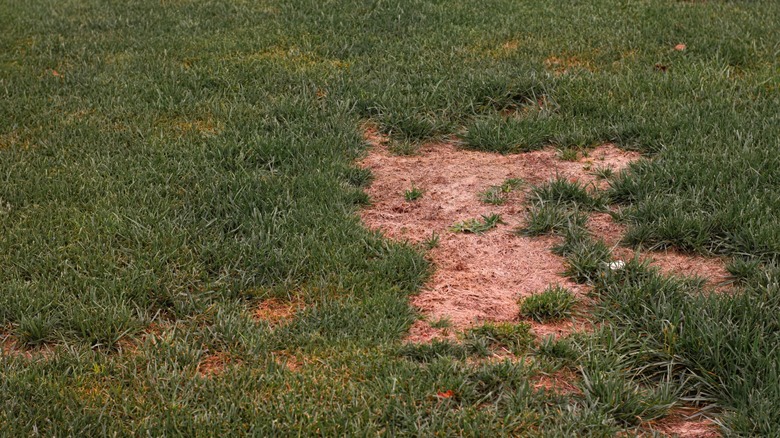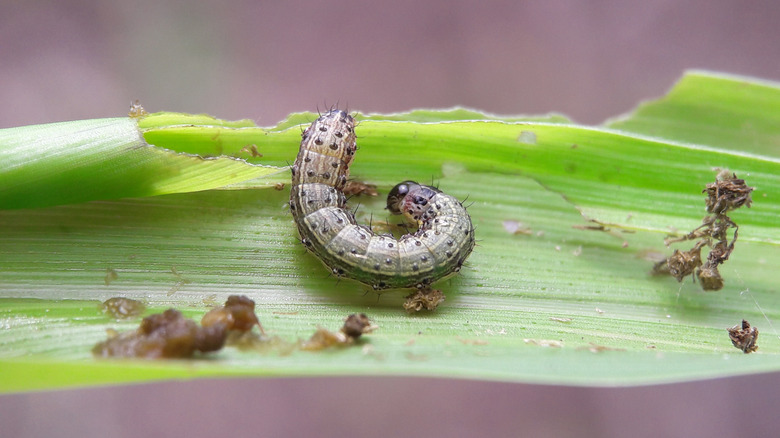Why Jagged Blades Of Grass Can Quickly Turn Into A Patchy Lawn Nightmare
What's chewing on your turfgrass? If the blades of grass in your lawn are looking jagged and ragged, chances are that critters are chomping on it. In addition to the worst garden pests you'll want to banish from your yard immediately, two major lawn pests known for chewing on grass and causing damage are sod webworms and armyworms. Controls are suggested, but you may want to consult with a lawn care professional.
Armyworms in larval form — caterpillars — primarily eat grass. They actually have two larval stages and eat different parts of the grass blade in each stage. They travel in large groups (like armies) all day long seeking food and leaving destruction in their wake. These pests are capable of severe damage to crops and lawns. Cool, wet conditions seem to attract armyworms. For control, handpick the caterpillars off turf, introduce parasitic species, or apply an insecticide like spinosad.
Sod webworms come in more than 20 grass-chomping species and are the larvae of pyralid moths, also known as snout moths. An extensive infestation of these larvae can kill your lawn or parts of it. Up to two generations of sod webworms emerge annually. They chew grass blades off right at the crown. You'll first notice the grass thinning and then see brown spots. A number of control options are available, including a soapy water treatment, biological controls (such as flies, wasps, and nematodes), or reduced-risk insecticides.
Control grass-destroying insects in your lawn
One more group of grass-chomping pests is less problematic simply because they do not attack turfgrass in numbers as large as armyworms or sod webworms and tend to prefer short-mown turf, such as on golf courses. These are billbugs, the larvae of which feed on both grass blades and roots, starting with the stems and crowns of the grass. Eventually the area of grass under attack will look patchy and dead. The larvae are visible, so if you see symptoms of damage, poke around in the soil for whiteish, wormlike critters a little less than ½-inch long and C-shaped. Unfortunately, by the time you see billbugs, it's likely too late to do anything until the following year. In late May of the year after the damage, you can apply a neonicotinoid insecticide.
The importance of meticulous lawn care to deter pests cannot be overstated. You'll want to avoid lawn maintenance errors that can result in a major pest problem. Gardeners are advised to water well and evenly, not to mow grass too short, avoid excess nitrogen in fertilizer, and aerate to reduce thatch. Failing to control weeds is another lawn care mistake that's attracting bugs to your yard; establish a reliable weeding routine to avoid this nightmare.

